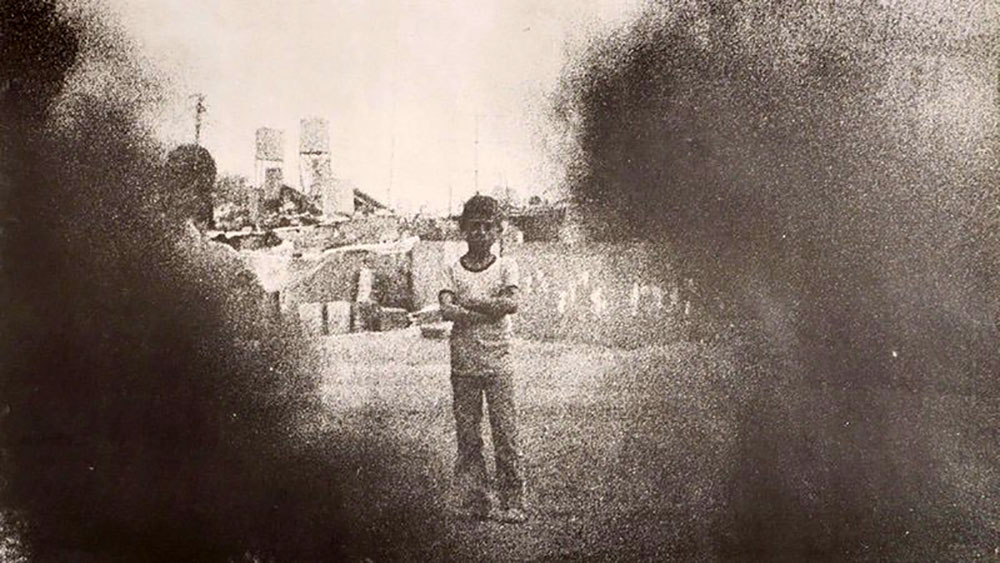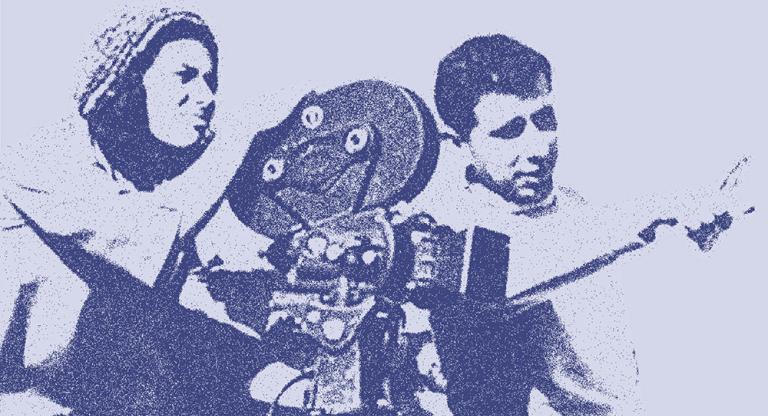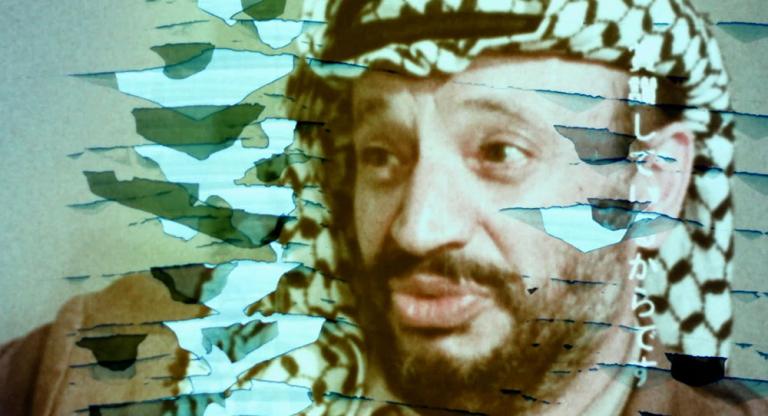In the early 1980s, Swedish documentarian Per-Åke Holmquist, along with a handful of collaborators, traveled to the Jabalia refugee camp in the North Gaza Governorate. For several years preceding their trip, the camp had been convulsed by a series of Palestinian protests and Israeli reprisals, a period of tumult that would set the scene for the First Intifada, which ignited in the camp a few years later. Among the people who worked on the resulting documentary feature were Joan Mandell, a journalist and Arab Studies scholar, and Pierre Björklund, who had previously worked on nonfiction films in Senegal and Eritrea.
Gaza Ghetto follows the El-Adel family: Itidhal and Mustafa and their many children, including Ra’ida Abdullah, Samar, Shuroug, Riham, and Ayed. We see the family’s humdrum daily routines: waking up grumpy, getting dressed for school, brushing their hair, and attending morning prayer at the UNRWA Jabalia Girls’ Preparatory School. Holmquist and his team capture the raw nerves of the El-Adel family as well as the shocking callousness of the IDF reservists sent to intimidate the camp’s inhabitants. Shaky handheld footage shows Israeli soldiers in floppy fatigues kicking Arab teenagers on the ground and randomly firing their M16s into residential buildings. Holmquist, through an interpreter, accosts a particularly shaggy Israeli reservist about his role in the oppression, asking him how it feels to police a stateless population and surveil their every movement. “It feels like work, that’s all,” he says. “You call this work?” Holmquist replies.
The film provides some historical context through black-and-white archival footage from 1948, when the original Israeli invasion of Palestine displaced some 150,000 people, and 1967, when the Six-Day War resulted in the Israeli occupation of Gaza and the West Bank and the displacement of a further 300,000 Arabs. We see scenes of the Al-Ahli Arab Hospital in Gaza City, where Mustafa works as a healthcare provider. (Al-Ahli was hit by an Israeli rocket that killed hundreds on October 14, 2023.) An old man describes his family’s exodus from the village of Dimra, which was erased by Israeli settlers in the aftermath of 1948, to the Gaza City neighborhood of Rimal, which was flattened by Israeli airstrikes in the early days of the current war. We see scenes of a woefully inadequate international response—the United Nations and Quaker volunteers distributing meager rations—and the grueling daily grind endured by the working-age men and women of the camp, who leave the camp before dawn each day and spend several hours commuting to Tel Aviv or Jaffa to then spend hours, and sometimes entire fruitless days, soliciting jobs in an informal day-labor market.
Ariel Sharon makes several appearances, as does Binyamin Ben-Eliezer, both IDF veterans and one-time Ministers of Defense. They are mostly there to justify the pattern of settlement and military repression in the occupied territories in the period between the Six-Day War and the Egypt-Israel Peace Treaty. Holmquist doesn’t allow them this luxury however, as their assurances—for example Ben-Eliezer’s claim that the Military Governorate is “acting in accordance with international law”—are intercut with former residents of the destroyed Palestinian village of Isdud describing schools and mosques being bulldozed, as well as intertitles summarizing Article 53 of the Fourth Geneva Convention, which prohibits collective punishment.
Sharon’s guest appearance mainly consists of him and his wife Lily Zimmerman at their ranch, Havat Shikmim, which was built on the ruins of the Arab village of Huj. After describing his “peaceful coexistence” with his Arab neighbors, he code switches and describes how he “took care of and eliminated PLO terrorism in Gaza district,” bragging about hunting militants and sending them to remote areas like El Arish in the occupied Sinai Peninsula. The Sharons’ picturesque Mediterranean estate represents one of the many ways in which Israel’s history in the Gaza region has been sanitized; another one that Holmquist gives us a glimpse of a corny Six-Day War walking tour for corn-fed American tourists.
But Ben-Eliezer comes across as far more callous than Sharon. When asked about children dying in the raids on Jabalia, he responds, “No more than three or four kids have been killed, if you would like to call them kids.” One of these children is Mustafa and Itidhal’s son Suhail, who was eight years-old when he was shot and killed by IDF forces. A grief-stricken Itidhal, wailing and beating her chest, implores her other young children to join the PLO and “avenge Suhail,” illustrating with disarming candidness the intergenerational cycle of violence that Israel’s policies in the region continue to perpetuate.
If viewed ungenerously, Gaza Ghetto can be seen as yet another entry in the tradition of Swedish filmmakers lending their voices to the “voiceless,” a trend explored by Göran Olsson in his documentaries The Black Power Mixtape 1967-1975 (2011) and Concerning Violence (2014), which were both assembled from footage discovered in the archives of the Swedish national television broadcaster. While the theme of Olsson’s films is certainly Black liberation and decolonization, it is also the attitudes and positions of the Swedes who traveled to the United States and Guinea-Bissau to render visible the struggles of the oppressed.
Holmquist kept returning to the Palestinian cause throughout his career, yet unlike the work of his SVT predecessors, his film avoids indulging the stance of a white savior. In a 2008 interview on Sveriges Radio about his latest film, Young Freud in Gaza, he said that the biggest change he had observed in the situation was that in 1985 it still seemed there was some hope for a two-state solution, a hope that had evaporated by 2008. In Gaza Ghetto, we even hear IDF reservists expressing the view that Gaza and the West Bank should be returned to the Palestinians. At the same time, we’re presented with Yitzhak Rabin, symbol of the peace process, vehemently denying the Palestinians their right to self-determination.
Gaza Ghetto: Portrait of a Palestinian Family screens tonight, April 3, at Maysles Documentary Center on 16mm. The screening will be followed by a Q&A with Munir Atalla, a Palestinian-American writer and filmmaker, and Nasri Zacharia, a New York based artist, filmmaker, curator and educator. Proceeds from the screening will support the Palestine Children’s Relief Fund.




